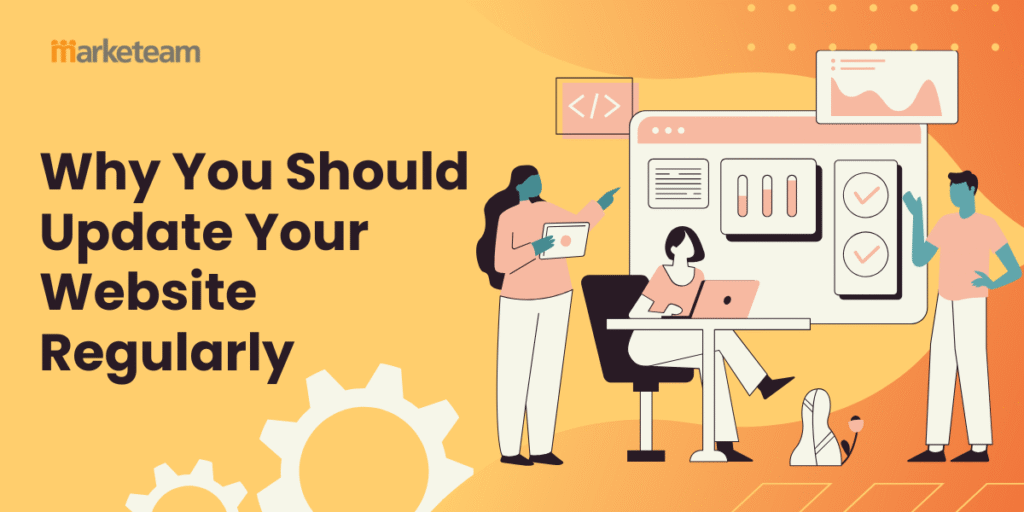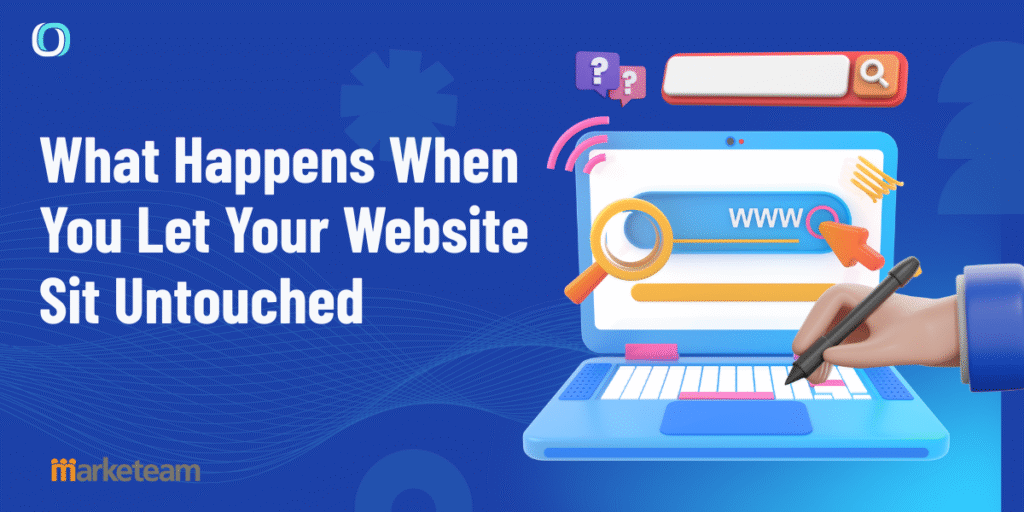
Updating your website means keeping content fresh, fixing technical issues, and ensuring everything still works the way it should. But frankly, most Brisbane business owners we talk to at marketeam.com.au launched their site 2-3 years ago and never touched it again.
That might seem harmless enough, but outdated websites don’t just look unprofessional. They actively lose you potential customers through broken links, security risks, and poor search engine rankings.
So in this article, we’ll show you what happens when you ignore website updates, how to spot the warning signs, and how often you really need to redesign your website.
Let’s start with what goes wrong when websites sit untouched.
What Happens When You Let Your Website Sit Untouched
When you don’t update your website regularly, three major problems start piling up that hurt your business.

First, hackers scan for outdated WordPress plugins and themes to find easy entry points to steal customer data. And drawing from our experience managing Brisbane business websites, we’ve seen how a single outdated plugin turned into a $4,000 emergency fix.
But don’t just take it from us; according to MalCare, 55.9% of attacks on WordPress sites happen because of vulnerable plugins. So your content management system needs security patches the moment they’re available; otherwise, you’re leaving the door wide open.
Once hackers get in, the damage spreads fast. But even before that happens, search engines are already penalising your site for stale content and poor technical performance. And since Google’s algorithm favours websites that stay up to date, neglected sites will gradually drop in search engine rankings and lose visibility.
The third problem hits your visitors directly. When people encounter broken links or pages that won’t load properly, they click away within seconds. That lost trust is hard to win back, and you’re losing potential customers before they even see what you offer.
5 Signs Your Website Needs Attention Now
How do you know if your website has crossed from “slightly dated” to “actively losing customers”? The signs aren’t always obvious at first, but once you know what to look for, they’re impossible to ignore.
Here are five red flags that mean your site needs attention right now.
1. Broken Links Are Everywhere
Dead links create frustrating dead ends that make your business look abandoned to potential customers. When someone clicks a link and lands on an error page, they assume you don’t care enough to fix basic problems.
2. Your Site Isn’t Mobile Friendly
Tiny buttons and unreadable text on phones drive away more than half of your potential customers.
Around 55% of Australian web traffic comes from mobile devices now, which means poor mobile responsiveness is costing you real money. When your site doesn’t work on phones, search engines won’t recommend it either.
3. Poor User Experience Drives People Away
Sites taking over 3 seconds to load lose half their visitors before the content even appears. Believe it or not, Google’s research found that the probability of bounce increases by 32% as page load time goes from 1 second to 3 seconds.
4. The Design Feels Stuck in the Past
Outdated fonts, colours, and layouts immediately tell visitors your business might be behind the times. The reality is that design trends shift every few years, so what looked modern in 2015 now screams “this company hasn’t invested in their online presence.”
5. It Doesn’t Support Your Marketing Strategy
Your website can’t capture leads, track conversions, or integrate with your email platform and ad campaigns (turns out most sites built before 2022 can’t properly track conversions from modern ad platforms).
So if you’re running ads but can’t see which ones bring customers, you’re essentially throwing money into the dark.
How Often Should You Really Update Your Website?
Fresh blog posts or page updates every month signal to search engines that your site is active and relevant. Search engine algorithms favour websites with fresh content, which means regularly updating your site helps maintain your search engine visibility.
Then there’s security. Your content management system releases patches the moment vulnerabilities are discovered, and you need to install them that same day. So, even one day of delay can be all a hacker needs to exploit a known weakness and compromise your entire site.
But in reality, complete redesigns work differently. Website redesign frequency typically falls every 2-3 years, and that’s when your business goals have shifted significantly or design trends have moved on.
A full website redesign tackles everything from your brand identity to user interface, so you’ll get a chance to align your online presence with where your business is actually heading.
Now that you know when to update, let’s talk about what kind of updates you actually need.
Small Tweaks vs Starting From Scratch
Quick fixes include updating text, replacing images, fixing broken links, and tweaking individual page layouts. These small website updates keep your site running smoothly and usually take hours or days to complete.
Now, the cost sits around a few hundred dollars, so you can budget easily as a part of an ongoing process.
Full website redesigns are a different beast entirely. They involve rebuilding your site structure, creating a new visual design, and rethinking the entire user experience from the ground up. This means reimagining how your website’s content flows, updating your web design to match current trends, and ensuring every element supports your business goals.
Here’s a real example: one Fortitude Valley client spent $800 yearly on small updates instead of ignoring their site completely. Based on our firsthand experience with them, those regular website updates prevented what would’ve been a $15,000 emergency redesign when their payment system became incompatible with newer security standards.
Your Website Won’t Fix Itself
Neglecting your website creates security risks, lost customers, and eventual expensive emergency fixes down the track.
The reality is that small, regular updates keep your site healthy and performing well, while full website redesigns handle major shifts in business goals or when design trends have moved too far ahead.
Our ongoing support packages help Brisbane businesses stay current without the stress of managing website updates themselves. If your site is showing any of these warning signs, now’s the time to act before small problems turn into expensive disasters.